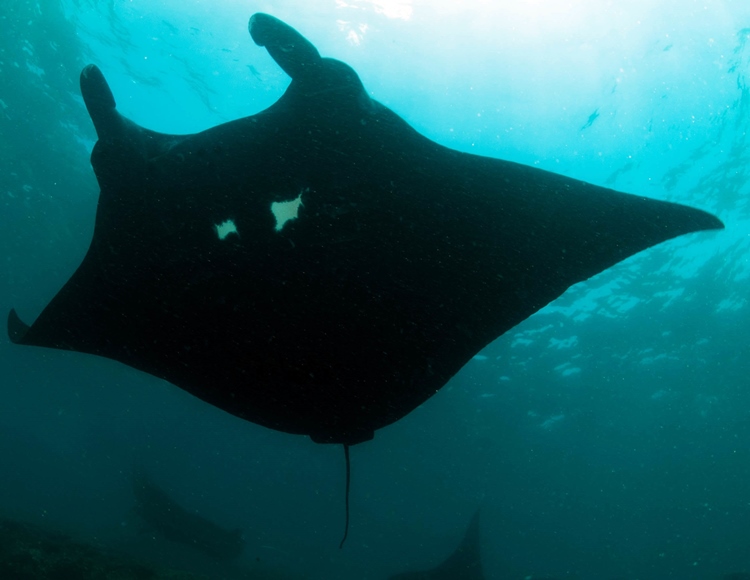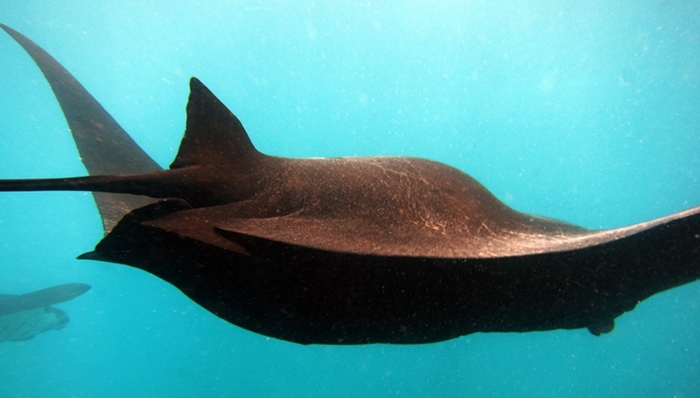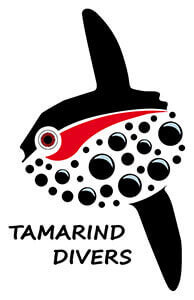by Tamarind Divers | Nov 20
Surely one of the most graceful creatures to inhabit the oceans and top of most scuba divers ‘things to see’ is the manta ray. Nothing gives a diver that ear to ear grin and warm fuzzy feeling better than a manta ray, gliding inquisitively by…
Manta rays are found in tropical waters worldwide and two different species are recognised, the reef manta (manta alfredi) and the oceanic manta (manta birostris). We are very lucky to have a large resident population of reef mantas in the southern waters of Nusa Penida.
So, how do you go about adopting a manta?
Marine Megafauna Foundation S.E. Asia
The Marine Megafauna Foundation (MMF) S.E. Asia (formally Aquatic Alliance 2012-16) was founded in January 2012. They are the small, but ambitious research arm of MMF Worldwide, which has bases in the Western Indian Ocean, SE Asia and the Americas. The MMF’s work is focussed on threatened marine megafauna, particularly sharks and rays.
Research data collected by the MMF, along with a number of other conservation organisations, was included in a review conducted by the Indonesian Ministry of Maritime Affairs and Fisheries, which led to manta rays being protected throughout Indonesia in 2014. The study revealed that a single manta ray is worth an estimated US$1 million in tourism revenue over the course of its lifetime, versus its value of $40-$500 if caught and killed.
This was great news for the mantas of Nusa Penida and all of Indonesia, which is the largest sanctuary for both species of manta rays in the world.
For more information on MMF and how you can support their efforts, check out their website:
https://marinemegafaunafoundation.org/
MantaMatcher.org
Manta rays are widely distributed, migratory, and have unique spot patterning on their underside that can be used to identify individuals, much like a fingerprint. MantaMatcher.org, which was developed in partnership with the MMF, is the first global online manta ray database, managing manta ray sighting and identifications worldwide. Any diver or snorkeler with a camera can take and upload a manta identification photo. Researchers can also upload and organize individually identified manta rays in the regional populations they are managing. MantaMatcher.org also promotes collaborations by way of cross-referencing different study sites. Scientists can now examine if populations are shared between neighbouring countries, examine regional and long-distance movements and examine the lifespans of manta rays. Contributing to this ongoing work is a way for the public to engage in what is commonly known as ‘Citizen Science’.

Introducing Goecy (pronounced Gucci) – our adopted manta!
Tamarind Divers fully support the MMF in understanding more about our magnificent mantas in order to improve research & conservation efforts. When we have space on our dive boat, we offer MMF researchers free trips, in order to assist their ongoing research.
We have adopted a manta named GOECY, who is a female melanistic (black) reef manta with a couple of distinctive white patches on her underbelly. She has a wing span of around 3.5m and has had more than 20 recorded sightings! Back in 2016 GOECY was found to be pregnant, so let’s hope we see her again with those distinctive ‘bumps’.

If you see GOECY on your dives at Manta Point or Manta Bay, please try and get a picture if possible, or let your dive guide know!!
We will give a FREE t-shirt to any of our divers who uploads a picture of GOECY onto MantaMatcher ?
You can check out more images and further details about MantaMatcher.org on the link below:
https://www.mantamatcher.org/individuals.jsp?number=f8c02cef-88ba-48cf-901a-f515a36e3ef2
